Tweetspeak’s virtual Regional Tours take us to destinations of all kinds, finding inspiration in places such as art museums, libraries, and natural settings. Today, we tour the San Jose Museum of Art with a docent who instructs us to take a closer look.
______________________
“One eye sees, the other feels.” – Paul Klee

After a serious car accident in the 1980s, Chihuly could no longer twist and shape the hot molten glass. Now he designs the sculptures but relies on other artisans to craft his vision to life. She asked us whether Chihuly’s sculptures are considered art? Was she hinting at the industrialization and/or commercialization of Chihuly’s work? Or that an artist must physically create his own art instead of delegating its formation? Most of us thought Chihuly’s sculptures were still art.
Next we walked into the museum cafe where hundreds of hanging paper clips hung from the ceiling in different lengths and varying distances from a wall. The installation suggested silver rainfall. Martina had added one of the paper clips. She asked us if we thought this was art even though someone might say, “my three year old could do that.” She hinted how an idea can be the genesis for art, but the idea itself doesn’t create the art.
An unexpressed idea in someone’s head won’t inspire anyone or the artist. Does something only become art if the idea is expressed in a physical form?
I agree with Aristotle: “The aim of art is to represent not the outward appearance of things, but their inward significance.” Ironically, often the inward significance of something becomes apparent only when it is revealed outwardly – even if it is only in a private journal. Most journals might not be considered art, but what about Anne Frank’s diary? If her work is art, does it trace to the significance of the content and/or the significance of her situation? Who decides what is significant?
I believe in an emotional and spiritual element to art. Was that what Marina was alluding to when she encouraged us not to listen to art critics but to listen to our hearts when we interacted with art?
Before we observed three hanging wire sculptures in a corner of the lobby, Martina said the average museum attendee views an art piece for six-seconds. She wanted us to observe the sculptures without speaking for at least 10-15 seconds before we shared our observations. Ten seconds crept by like wading in waist-high mud.
As I gazed at the sculptures, more details came into focus: they were in dark brown and black wire, and some of the spherical shapes were embedded within other larger spheres. How did artist Ruth Asawa accomplish that with wire? The sculptures evoked a slow-motion photograph of a drop of water or oil descending under gravity’s influence.
Next, we gazed at an aerial perspective painting by James Doolin aptly named Shopping Mall Studies and Ephemera, 1973-77 that covered an entire wall. Marina asked us to observe the painting before sharing our thoughts. One person noted it was the 1970s, as a woman wore bell-bottoms; another incorrectly guessed the decade based on the cars. Intricate details included what each person wore, the names of shops on the promenade, and the shadows cast by buildings and a flock of birds showed Doolin’s careful four-year study. She asked if we thought Doolin had painted himself into the scene. We found him in the center of the intersection, wearing a beret.
Marina lived in Czechoslovakia under communism and she recalled people wore brown and polyester. So the bright colors of the people’s clothing in the painting struck her. She reminded me how much our past influences how we view art. Because I was born in the United States, the vivid colors of each individual’s clothing didn’t strike me as unusual. Initially, I didn’t make a bigger connection to how being able to wear colorful clothes is part of our freedom to express ourselves because I’ve never lived under an oppressive regime. Her insights made me look at Doolin’s painting with fresh eyes.
Because of Marina, I will make time to truly see with one eye and feel with the other when I observe art in my daily life.
Featured photo by Thomas Hawk, Creative Commons, via Flickr. Image of museum lobby by Kim Smith; Dale Chihuly’s (detail) Cadmium Yellow, 1995, image of his Nuutajarvi Turquoise Chandelier, 1995, blown glass, image of Ruth Asawa’s Group of Architectural Works, 1955-1965 and image of James Doolin’s (detail) Shopping Mall, 1972-77, oil on canvas (1932-2002) San Jose Museum of Art, all by rocor, Creative Commons, sourced via Flickr. Post by Dolly Lee.
Our virtual Literary Tours take us to literary and artistic destinations of all kinds, including writer’s residences, libraries, museums, galleries, and historical locations.
Browse more Literary Tours
Browse more Galleries & Art Exhibits
______________________
Subscribe to our free weekly newsletter.
We’ll make your Saturdays happy with a regular delivery of the best in poetry and poetic things.
Need a little convincing? Enjoy a free sample.
- Regional Tour: The Getty Center in Los Angeles - November 6, 2015
- Regional Tour: A Glimpse of Yosemite - August 14, 2015
- Literary Tour: Mariposa Museum & History Center - May 20, 2015
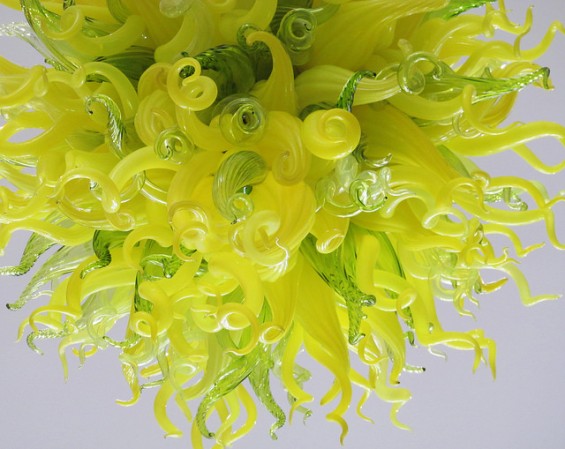
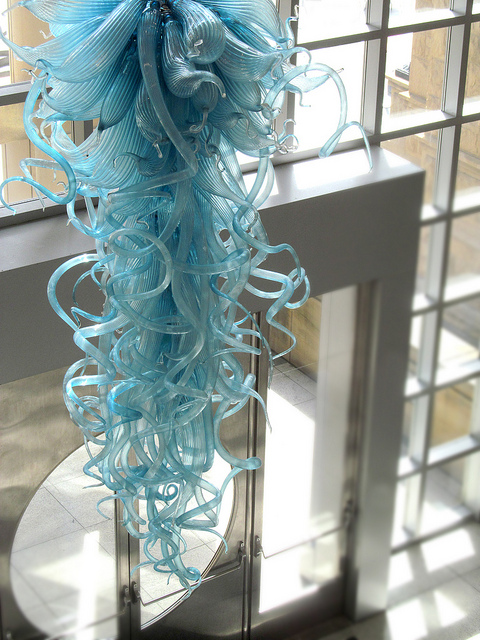
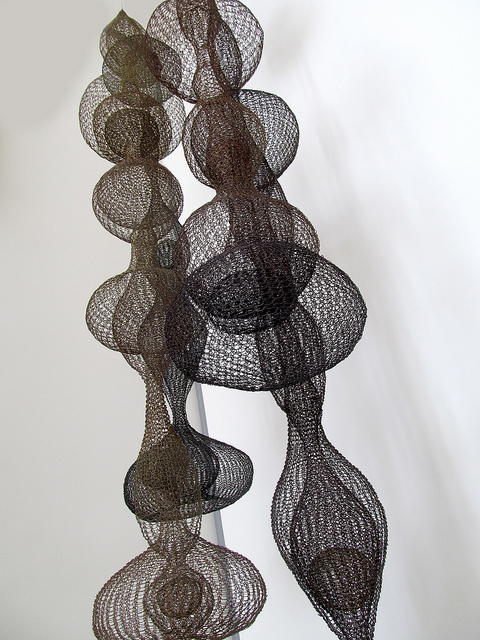
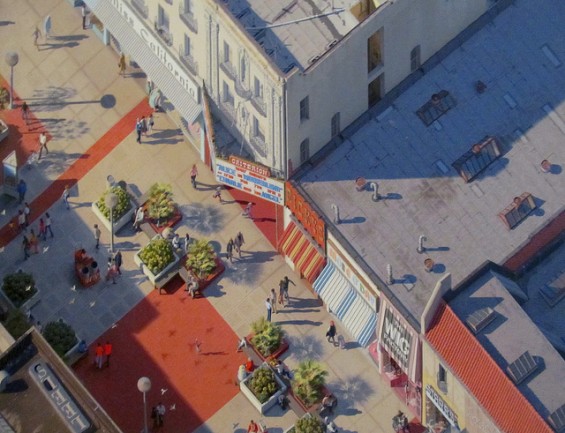
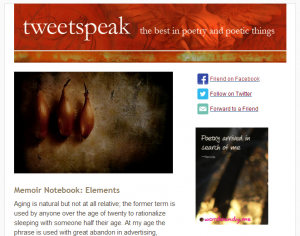
Marcy says
Dolly Lee, I really enjoyed this article so much, you gave Chihuly’s work such beauty and rare thoughts on how to look at art. The part about standing there for a few seconds was rather funny since I can stare for an hour at a piece. Chihuly’s art came to Nashville, TN to the Frist Center, it was to die for, the pieces of glass, colors so vivid, a prize to see. What really grabbed me was the net looking hanging piece, as a student at the Watkins Inst. we would go on assignment, carry a drawing pad and pencil. Walk downtown Nashville, stop and draw what was in front of us, it was so much fun. You also learned to create a piece by simply using an ink dot. Amazing what you can create with just a dot. The same goes with a /. Draw the wind, the sea, the ocean but only with white chalk. Art is a frame of mind. The more you draw the better it gets like in all things we do. Thank you for sharing your eyes.
Dolly@Soulstops says
Marcy,
Thank you for sharing your perspective as an art student…I only took one art class decades ago in high school (where I quickly learned I didn’t have artistic gifts)… and you’re right, an artist can do so much with only a little…you’ve made me think about what I could create with “/”…and an artist can gaze at a piece for an hour 🙂 Thank you for making me smile today 🙂
Maureen Doallas says
Great photos and a wonderful post, Dolly. What a perspective in Doolin’s piece, and so much detail!
I love Ruth Asawa’s wire sculpture. I have a book of her work, which is elegant and fluid and innovative. Sadly, Asawa died last year.
Dolly@Soulstops says
Maureen,
I could have spent more time at both Ruth Asawa’s sculpture and Doolin’s piece…And I have to give credit to Ann and Laura for finding the photos on Flickr 🙂 I read about Ruth’s passing…sad.
Thanks for visiting with me.
Laura Brown says
I love your comparing that wire piece to drops of oil descending. I looked at it for 15 full seconds. That is a long time, isn’t it? Just long enough to make a viewer want to look a lot longer.
Dolly@Soulstops says
Laura,
Proud of you…more than double the average museum attendee at 15 seconds 🙂 Isn’t it funny how looking deeper causes one to want to look more? Thanks for being here 🙂
Diana Trautwein says
What a lovely post, Dolly. And what a fine tour guide. Thanks, Dolly, for all of this.
Dolly@Soulstops says
Diana,
How fun to see you here…Thank you for joining the tour 🙂